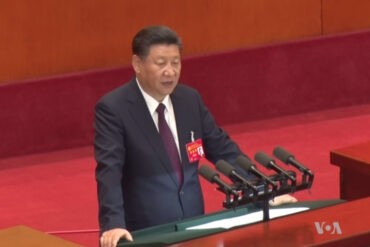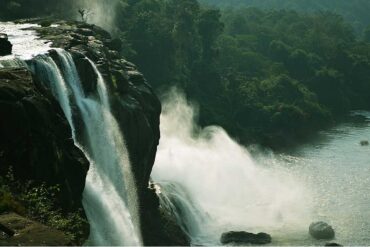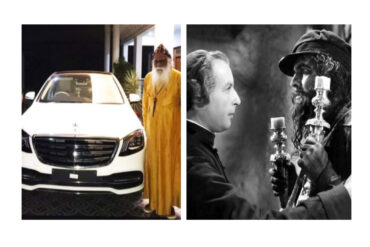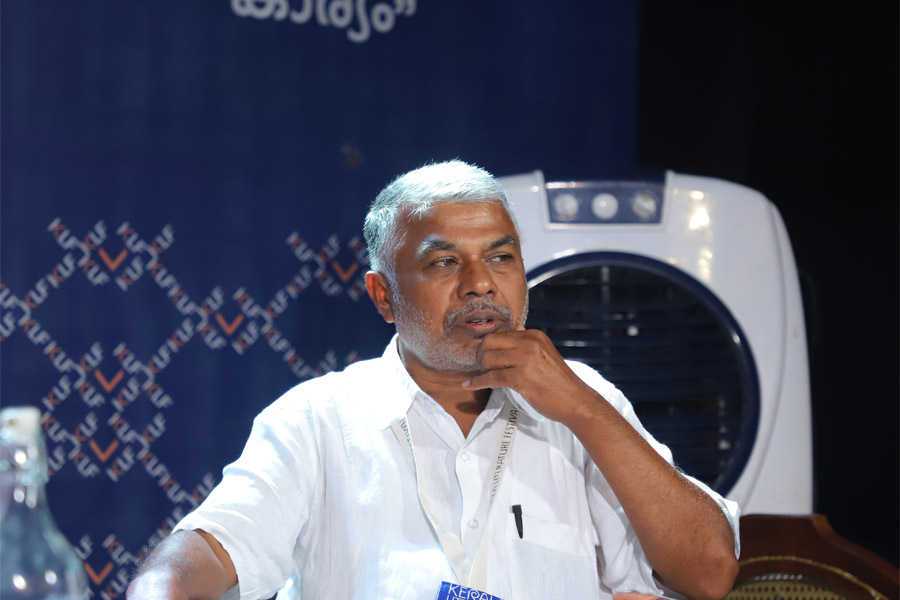The general election, with only the first round over, poses a challenge to Narendra Modi. He promised the twin attractions of a Hindu Rashtra for his people smarting under the Nehruvian secularism, and Achhe Din (good times), through employment for the aspiring youth, relief to farmers who had been crushed under backbreaking and spirit-sapping debt ever since liberalization first began twenty-five years ago under PV Narasimha Rao, and rapid development that would allow industrial giants to realize their full potential.
The Modi years may well be remembered just for four things – demonetization that traumatised the poorest as much as it did the middle classes, the bovine laws that killed scores at the hands of Hindutva lynch mobs and jeopardized agrarian economy already reeling under farmers suicides, a chilling targeted hate campaign that has polarized the country and incited violence, and finally, entirely alienating Dalits and Tribals by trying to withdraw laws that protected their lives and their homes.
The suicide bombing of a Central Reserve Police Force (CRPF) convoy in Kashmir by a terrorist killing 41 troopers shocked and outraged the country. They had been led to believe that the macho and muscular Modi’s political doctrine backed by the military were in absolute control in Kashmir. The pellet guns, the infamous tying of a civilian to a jeep by a young major, and the elimination of major commanders of sundry terror groups were supposed to have taught handlers in Pakistan a lesson.
Modi had to order a daring airstrike into Pakistan, the next logical step after commando action two years ago. The air strike proved that India felt it was no longer bound by its war doctrine of not crossing the international border or the line of control and “actual control”, as they are called in various sectors of the long stretch from Gujarat through Rajasthan, Punjab and Jammu and Kashmir, the hot spot for the last three quarters of a century.
It called Pakistan’s bluff of a nuclear escalation, and it proved that Indian defence forces would obey political commands from the political hierarchy when called upon to do so. Long ago in 1971, in the face of far graver escalation of tension across the border, the then army chief Sam Manekshaw had refused to oblige prime Minister Indira Gandhi with an immediate strike into Pakistan, seeking and getting time of almost six months before he struck, and divided Pakistan into two, birthing an independent Bengali-speaking Bangladesh.
In the event, while the Indian army just remained alert, the air force swept into Pakistan with a motley air armada of modern and ancient strike aircraft. Unfortunately, the frontline of Soviet-era MiGs, however updated their systems were made, perhaps failed to fully deliver what was expected of them in wiping off a sprawling madrasa.
What was expected to be a glorious air victory, ended in tragedy if not ignominy. The brave MiG pilot, Abhinandan Varthaman, shot down a US-made F-16 fighter jet, but was himself struck down. He parachuted safely, but into captivity. A military and political drama ensued- trying to get him back from Pakistan to save face. Pakistan Prime minister, Imran Khan, scored international brownie points by almost immediately announcing he was releasing the Indian pilot before international pressure became too apparent. His political domestic constituency remained safe. Memories of the 1971 defeat were not revived.
Modi’s political constituency could not rejoice, despite a well-orchestrated campaign on social media, and what is now correctly called Modi’s “Godi”, or lapdog, electronic media.
The much-wonted diplomatic goodwill generated by Modi in his scores of visits to North America, Europe and even China have failed to isolate Pakistan. China has consistently voted for Pakistan. The US muttered under its breath but, has never used its drones to take out people that India identifies as terrorists no less dangerous than Osama bin Laden. Saudi Arabia, whom India was counting on for much, not only gave a massive cash dole to Pakistan, but also continues to extend economic and political collaboration. And the Organisation of Islamic Cooperation (OIC), which invited India, home to the world’s second largest Muslim community, as a guest of honour at its annual meeting, also passed a resolution that indicts India on several counts.
In different times, Modi would have found it difficult to hide his face from the people. But in the style he has made so entirely his own, as apparent as the Rajputana turbans he wears to appear taller than anyone near him at public functions, Modi has chosen to brazen it out. He promises an aggressive campaign, and it is as poisonous as they come. He has targeted Rahul Gandhi as his main opponent. In all but ignoring regional satraps he almost succeeds in making a Lok Sabha election of 543 seats seem a US-styled presidential election for just one seat, that of the head of government by whatever name one calls him. In doing so, he keeps the election in the states comparatively open. Win or lose, the regional leaders remain probable post-election allies when the presidential contest has to revert to a counting of seats in parliamentary system.
He seems to believe, together with his major domo and party president Amit Shah, that in Rahul Gandhi he has an easy target. In the Sangh’s time-scale sequence, Rahul is of the line of Jawaharlal Nehru who stole the premiership from Gujarat icon Vallabhbhai Patel. He is the grandson of Indira Gandhi who brought in tanks to demolish the Akal Takht and injure the Golden Temple. He is the son of Rajiv Gandhi whose remarks goaded hordes to kill over 5,000 Sikh men and youth in the most horrendous manner, who brought in corruption in Defence deals through deals in the Bofors guns. He is also the son of Sonia Gandhi, the Italian who presided over UPA 1 and 2, the coal scam, the 2-G broadband scam and the Robert Vadra land scam.
The auburn hair, the “Pappu” image does no good despite victories in the populous states of Punjab, Madhya Pradesh, and Rajasthan. It also does not help that the Congress under Rahul Gandhi seems less accommodative and seemingly keen to alienate even well-meaning political allies such as the Mayawati-Akhilesh Yadav duo in Uttar Pradesh and Trinamool Congress in Bengal. Modi and Shah seem convinced of victory when they see Rahul all eager to wound but hesitant to strike in the critical area of social harmony and the battle against communalism and casteism.
To the untrained eye, Rahul is flirting with a second-grade Hindutva. His sacred thread in various states, the temple visits, the support to cow pounds, or gaushalas at state expense in Madhya Pradesh, and above all, his failure to use harsh language to condemn the targeting of Muslims and Dalits must be music to Modi’s years. A certain uncontrolled language when questioning Modi’s claims of military successes also puts Rahul Gandhi in an embarrassing position with the army and the vast number of retired soldiers. But Modi misses a crucial point. Indira Gandhi had shown, repeatedly, that it was more important to woo the people rather than to attack the opponents. She rose from the ashes, so to say, in 1979.
Modi’s opponent is not Rahul Gandhi. The Mahagathbandhan, or Grand alliance, which he so derides and mocks in his public utterances, is not so much a pre-election compromise as a post-election promise. Parties in friendly contests may well get more candidates elected than if they were in rigid compromises with seats divided not on the basis of any spherical influence, but on the pulls and pressures of personalities.
Modi’s main challenge comes from his great success of 2014. The campaign was built on hate, mostly, with the RSS in full cry, on attacking the Congress corruption, and on promises of good days (Achhe Din). He has failed in his attempts to change the discourse. Hyper nationalism, military adventurism and muscular governance in which Muslims and Dalits are shown their places will not work. Even a small erosion of ten or fifteen seats in Uttar Pradesh can bring down the BJP’s castle of dreams. The party peaked in 2014 in its strongholds, and with its allies in areas such as Bihar and Maharashtra. There is only one direction in which it can go – and that direction is south.
This writer has travelled one week every month in the last twenty months across the length and breadth of the country. The polarization is frightening, of course. But also apparent is the great damage done to the agrarian economy. Stray cattle, hungry bulls and dying cows have made the revered animal into a curse for the farmers in every state. Demonetisation will come back to haunt Narendra Modi even if Rafale, allegedly the most corrupt defence deal ever in India, does not do so in full measure. Just how deep it has been wounded will be apparent only by inference. The results in May 2019 will be an important yardstick.







